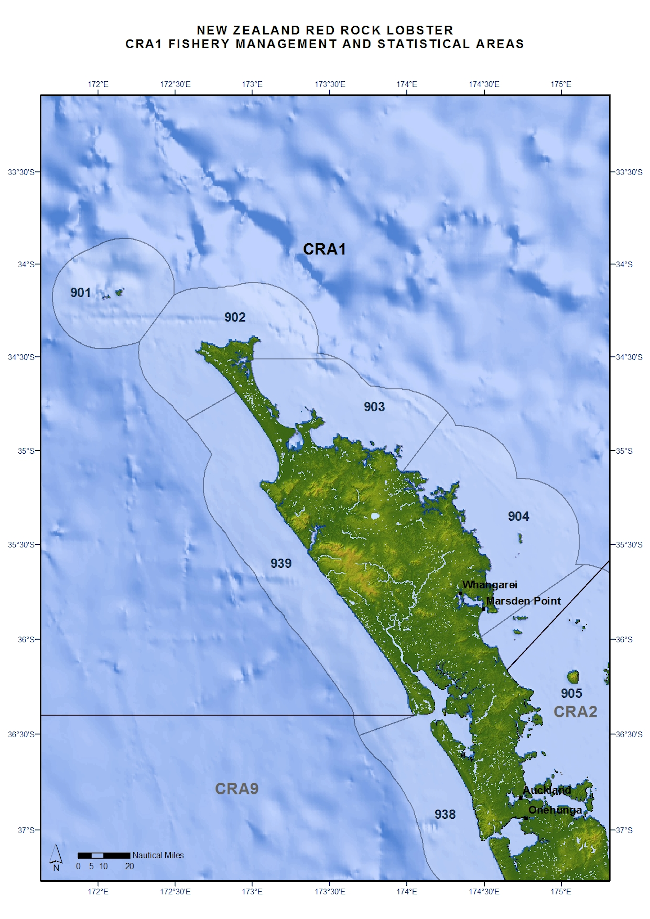CRA1
The CRA1 fishery extends from the Kaipara Harbour on the west coast of the North Island around North Cape and then south to Te Arai Point. The commercial fishery extends offshore to the Three Kings, but the bulk of the commercial harvest is taken from waters adjacent to the mainland.

The 2020/21 CRA1 110 tonne total allowable commercial catch (TACC) is distributed amongst 36 quota share owners. Eighteen permit holders reported CRA1 catches in 2019. The estimated landed value of the commercial catch was $10.4 million (based on average port price paid to fishermen), making rock lobster an important contributor to the local and regional economy.
Amateur catch of rock lobster is estimated at 47 tonnes (MFish 1996). Diving using underwater breathing apparatus is the predominant method used by amateur fishermen and women, although hand gathering, ring potting, and potting from vessels are also used.
Rock lobsters have cultural significance to local Maori and a large Maori population in the Northland region ensures that rock lobster retains significant customary value. No reliable estimates are available for customary catch. The progressive implementation of reporting procedures within the North Island Customary Regulations might assist in future evaluations of customary harvest for the CRA1 fishery.
CRA1 stock status is evaluated using commercial catch and effort and quota monitoring report data. Tag, release and recapture projects have been updated from 1996 to the current season. In addition, the CRA1 commercial stakeholders enable intensive observer catch sampling sequences for the fishery. The largest catches of Packhorse crayfish (PHC) are taken in the CRA1 fishery and quota share owners have commissioned an industry-funded characterization and assessment of the PHC fishery with a view to recommending management changes.
